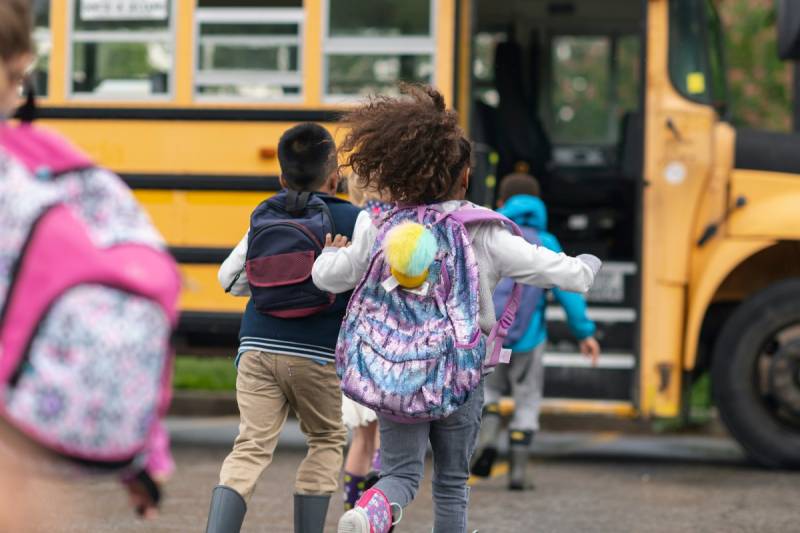The final budget deal also dedicates ongoing funding to transitional kindergarten, an intermediate grade level established to accommodate 4-year-olds who won’t turn 5 by Sept. 1, the cutoff for kindergarten admission.
The budget deal includes a timeline to implement transitional kindergarten for all 4-year-olds in California by the 2025-26 school year. The plan would cost $2.7 billion once fully implemented.
The state is also spending billions to expand child care subsidies. This year, $1.5 billion will go toward 120,000 additional kids, mostly those of essential workers. Next year, child care subsidy spending would increase to $2.7 billion.
“I’ve never seen such an expansion and an attempt to improve the quality of child care, really since the advent of pre-K in the 1960s,” said Bruce Fuller, a professor of education at UC Berkeley. “The expansion of early education, in sheer dollar amounts, rivals the increases in K-12.”
Easing the Fiscal Burden of Pensions
In past years, increases in overall education funding were dwarfed by the tens of millions of dollars some districts were required to pay to employee retirement funds. The cost of pension liability stressed district budgets, especially during the pandemic.
“Every year the pension costs continue to rise,” said Noguchi, from Modesto. “Last year, there was no cost-of-living adjustment but an increase in pension costs.”
The overall increase in funding this year would help districts with their pension liabilities, a fiscal burden that has pushed some districts into deficits.
More Teachers, More Class Time, More Meals
The budget deal also includes $2.8 billion in one-time funding to help school districts recruit, retain and train teachers. With a high number of teacher retirements this year, some districts face a looming staffing shortage. As the pandemic recedes, more teachers could keep class sizes low and allow students who fell behind to receive more one-on-one attention.
The state is also providing $1.8 billion this year as part of a multiyear $5 billion funding package to expand summer school and after school programs. Districts with more low-income students, foster children and English learners would get more funding.
In line with the Legislature’s proposal, the budget will also invest $54 million this year and $650 million in ongoing spending to pay for breakfasts and lunches for students.

